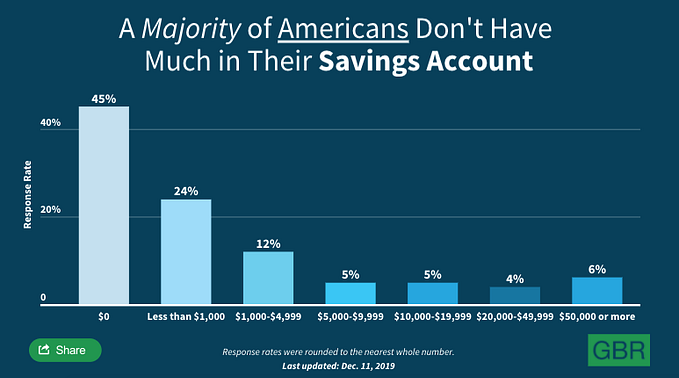Breaking down the UX researcher’s main responsibility…Research, of course!

This 5-part blog series is a continuation of the UX Research Checklist series by Brian Utesch and Theresa Nguyen. An analysis was done to understand the role of a UX Researcher looking across a sampling of 100 publicly available job postings. The intent was to take a snapshot in time of different characteristics across a mix of companies to develop an aggregate profile of a successful job candidate. The insights from this analysis can be reused by a variety of audiences to shape job descriptions or create professional development plans to be most competitive in the job market.
Previous Posts:
☑️ UX Researcher Characteristics: An Analysis of 100 UX Researcher Open Job Postings
🔬 The UX Researcher’s Main Responsibility…Research, of course!
📈 🖇 👩🏻💻 … stay tuned for more
It is no surprise that as a UX Researcher (also referred to as a Design Researcher or User Researcher in different organizations), the top responsibility of the job would be to design research plans, and then carry out and conduct those research studies. More than half of UX Researcher job postings that were analyzed specified “designing research studies” as a requirement of the job (found on 59/100 job postings) while virtually all of job posting had the responsibility of conducting the studies themselves (85/100).
However, as we take a closer look at those seemingly straightforward aspects of the job (designing the research study and then conducting it), we find that there are many intricacies that the UX Researcher will have to master in order to be effective. This includes knowing what methods to conduct and when. For example, when it is appropriate to use a qualitative or quantitative approach? The UX Researcher, many times, will be expected to conduct end-to-end research and also be able to create an end-to-end research roadmap (11/100). In the fast pace nature of UX, it has also become increasing desirable for the UX Researcher to be able to work in an agile and/or design thinking environment (13/100).
#1 Designing Research Studies
Focusing on the responsibility of “designing research studies”, knowledge of designing research plans and protocols encompass a variety of aspects within themselves. An advantageous skill of a UX Researcher, as mentioned in Blog 1: UX Research Characteristics: An Analysis of 100 UX Researcher Open Jobs, is knowing many different research methods such as ethnographic, diary studies, heuristic evaluations and so on. However, even more important than knowing how to use these methods, is knowing when to use these methods. Today’s UX Researcher must be able to “select appropriate methods to turn open questions and curiosities into formal research plans (from a UX Researcher job posting at Zendesk)”. The researcher needs to understand the capabilities and limitations of various research methods, and be able to discern when to one method over another. When it is beneficial to run a survey over an interview? How about a contextual inquiry over a diary study?
It is important that the research plans are able to not only uncover findings and insights about your users, but also inform the product strategy (more on this in Blog 3); this is the difference between providing interesting insights and useful insights. In an open role at Amazon Web Services, their role required the UX Researcher to “develop and execute a strategic program of research in support of growing Government Transformation services.” It is important that your research not only informs the next iteration of products but also points to potential areas of innovation for your team to pursue.
Lastly, an underrated but crucial part of being able to design research studies is all the work that goes into recruiting the right users for a study; many job postings specified that UX Researchers need to have an understanding of not only how to recruit the right users, but also helping to build systems for recruitment of users (18/100). For example, Bonobos, an e-commerce menswear company, was looking for a UX Researcher who could “build systems and processes to aid in recruitment and management of research projects.” Of course, the ability to craft an effective recruitment screener that aligns with the associated project needs while also juggling the logistics surrounding managing and scheduling those recruited users is crucial. Research at an industry pace requires fluency in recruitment because it is typically the gating factor in being able to execute research quickly.
#2 Conducting Research Studies
Being well-versed in the ability to conduct research studies was far and away the most preeminent job responsibility that was found on the job postings, appearing on virtually every one. There was a wide consensus that today’s UX Researcher needs to be proficient in both qualitative and quantitative research methodology (85/100). From the social media company Twitter to the City of Palo Alto, various job postings specified the need for a User/UX Researcher to be able to apply both methodologies into their research:
Conduct high quality research with a variety of methods that include both qualitative and quantitative techniques [and] analyze results. (Twitter)
Independently plan and conduct research using a wide variety of qualitative and quantitative methods from ethnographic field observation to the occasional survey. (City of Palo Alto)
Aside from the distinction of qualitative versus quantitative methods, the differentiation of the UX Researcher being able to conduct evaluative research versus generative research was prevalent as well. According to UserTesting.com, generative research is described as a “method of research that helps researchers develop a deeper understanding of users in order to find opportunities for solutions and innovation”. Generative research involves defining the problem at hand, which requires the researcher to understand users’ behaviors, environments, perceptions and attitudes. On the other hand, evaluative, sometimes referred to as design research, is described as a “method used for assessing a specific problem to ensure usability and ground it in wants, needs, and desires of real people.” This method is focused on testing a current solution and determining whether it meet’s user’s needs and provides a pleasant user experience and is easy-to-use.
Much of design/evaluative research aptly resides in the evaluation of designs, such as mockups, prototypes and live products. The UX Researcher needs to be able to perform design/evaluative methods such as “conduct user testing on design mockups, prototypes, beta versions, and finished products and features supplied by the Product Squads (Peloton)” and “gather and prioritize key questions from the product team to help define, plan, and execute the research from concept testing through the evaluative phase (Sonos).” Some common design/evaluative research methods includes being able to conduct usability testing, concept testing, benchmark testing, contextual inquires, field studies, A/B testing, and heuristic evaluations.
Evaluative research has traditionally defined the UX Researcher. UX Researchers typically are thought to be the ones to conduct studies on designs, mock ups, wireframes, or anything else that is tangible. Many times, UX Researchers are working closely with or even are embedded within the Design team, but there is also a transition for Researchers to work more closely with Product teams. For example, Rogelio Carrillo, a UX Researcher currently interning at Warner Media talked about the structure of research within the Warner Media organization:
The UX team I am on is housed within the Analytics and Product Insights team. In addition to evaluating the users’ experience with some of our products, we often times carry out projects that provide insights about our fans to the marketing team and other stakeholders.
Generative research, contrastingly, relies less on design, and does not require the team to have a tangible design ready to be able to conduct research. For example, in a UX Research job posting at Slack, the team was looking for a researcher that would be able to conduct projects on “understanding the how and why of team workflows, communication processes and cultures.” Some common generative research methods include surveys, ethnographies, persona development, interviews, journey mapping, diary studies, shadowing, mind mapping, participatory research, and conducting workshops. Today’s UX researcher needs to develop skills in both design/evaluative and generative research.

#3 Creating a Research Roadmap
Another arising skill is the ability to create a strategic research roadmap for a project team (11/100). This involves understanding what questions are most critical about the customers and mapping out what research projects will be needed to develop a great user experience. Rover.com, an online marketplace for people to buy and sell pet care services (such as pet sitting and dog walking), requires their UX Researcher to “define and drive the research roadmap while working closely with individual product groups.” Axon, a technology company that specializes in developing weapons for the military and law enforcement, similarly requires their UX Researcher to “build and maintain a research roadmap and a regular cadence of gathering user data.” From pet sitting to weapons manufacturing, it is important for the UX Research to be able to build out a research roadmap.

In Blog 4, we will discuss the business-savvy needed to ensure that business needs are translated into research, which in turn gets prioritized in a research roadmap.
#4 Work in a Design Thinking and/or Agile Environment
Lastly, in addition to being an exceptional researcher, the researcher must produce those results in a fast-paced environment. Being experienced in working in an agile environment involves having a pragmatic, nimble and creative approach to your research. Agile focuses on an ideology of iterative development, which calls for frequent inspection and adaptation as products are incrementally realized. Additionally, being able to apply agile AND design thinking methodology onto your research will enable you to be a very competitive UX Researcher (13/100). Design Thinking encourages the organization to be user-centric and advocates understanding their user needs, to develop innovative and creative solutions. Many of the companies listed wanting a researcher that both has experience “[leading] the user driven innovation process [such as] design thinking, with cross functional team members (Synergis)” and can “advocate design thinking and creative research processes, including co-creation, ethnography, collaborative working sessions, story boarding, and design charrettes (Fifth Third Bank).”

Conclusion
As can be seen in our analysis, it is obvious that research skills are expertise are required from today’s UX Researcher. Designing research studies, conducting those research studies, and being able to develop a research roadmap, are crucial responsibilities that the UX Researcher must manage, and many times, are skills the researcher has learned in school, bootcamps, apprenticeship programs, etc. However, additional responsibilities such as the ability to work in a design thinking or agile environment are also needed of the researcher, and are some of the responsibilities they will encounter for the first time on the job. In the next 3 blog posts, we will see that the UX Researcher’s job involves so much more than just conducting the research itself, contrary to the job title.










